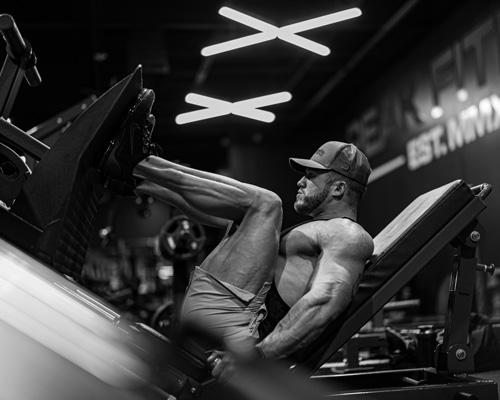Hello guys! I often hear from folks in my gym who are stuck progressing in the Bench Press and wonder how I keep setting higher PRs very frequently.
If you are here, you are probably curious about my secret.
Well, here it is.
The Bench Press
Before diving in, let’s briefly discuss the Bench Press, one of the ‘Big 3’ exercises. It’s fundamental for building a bigger chest and overall strength. You lie on a bench, pick up a barbell, lower it to your chest, and press it back up. This exercise mainly targets the pecs, shoulders, and triceps.
Learning the Technique
Despite being straightforward, many people get the Bench Press wrong. Common mistakes include poor foot positioning, improper grip width causing unwanted stress over the joints, short eccentric motion, and lack of arching in the back.
Set-up
- Lie on the bench and position your feet 90° or less to your knees while pressing the floor with your toes.
- Raise your chest and create an arch in your back (your lower back shouldn’t touch the bench) while pressing your upper back and rear shoulders against the bench.
Lifting The Bar
- Hold the bar slightly wider from your shoulder width (or shoulder width if uncomfortable)
- Focus on a point at the ceiling instead of the bar
- Take a deep breath and hold the air in your belly before lifting the bar.
- Lift the bar and lock your elbows, bringing it to the point you are focused on. Getting a lift-off from a spotter is helpful to save energy for the pressing.
Getting The Reps
- Lower the bar to your chest at the nipple line and press it back up to the starting point.
Important notes
- Don’t look at the bar! Always stay in the focus zone you found during the setup phase. Get the bar back there.
- Take your shoulders back and flex your abs to gain more control over the weight.
- Push the floor with your feet like when you do calf presses.
- Keep elbows at a 45° angle, to reduce shoulders pressure and the risk of injuries.
- Exhale after completing the rep, or during the concentric motion. I find more power in keeping air for 2-3 reps before breathing again.
- Lock your arms after finishing a rep before you continue to do another one.
Supporting Exercises
The chest is the main working muscle in the bench press. However, shoulders and triceps also work when we press, these are ‘supportive muscles’. You can enhance these muscles to lift more on the bench.
Shoulder Press
The Shoulder Press is a pressing exercise, similar to the Bench Press. But, it mainly works on the shoulders. Progressing in this exercise will enhance your Bench Press PR.
Standing Barbell Triceps Extension
This exercise targets the triceps and is challenging but effective. It puts your triceps under big tension compared to other popular triceps exercises. As you progress with this exercise, not only your Bench Press will improve, but also your shoulder presses. I highly recommend you add this exercise to your triceps workouts.
Putting This In Practice
I prioritize these exercises at the start of my workouts:
- Bench Press on chest days
- Shoulder Press on shoulder days
- Triceps Extension on triceps days
You can do Shoulder Press and Triceps Extension in the middle of the workout (depending on your split). But, I highly recommend doing them at the start since your energy tanks are full.
Sets and Reps
Begin with 3-4 warm-up sets, increasing weight and decreasing reps. Remember, It’s just a warm-up; your goal is to warm your muscles and nervous system up.
Depending on how I felt during the warm-up, I decided how much weight I would be pressing on the working sets. The last set should be between 80-90% 1RM for 1-2 reps (very important to not hit muscle failure).
For working sets, choose a weight you can press for 5 reps, staying 1 rep shy of failure. It’s very important to listen to your body during the warm-up sets and pick the weight accordingly.
Notes:
- Avoid hitting failure early to maintain energy for later sets.
- End with a 12RM weight for 2 more sets, focusing on slow eccentric motion.
- I recommend having a spotter, it will increase your confidence, and a lift-off assist will save your energy to the actual pressing.
- If you want to push yourself to the limit. When you are done with your working sets, lower the weight to your 12RM weight, and do 2 more sets with an emphasis on slow eccentric motion.
Rest
I rest as much as I need. It’s very important to listen to your body signals, if you are not ready to enter the set yet, don’t enter. You must let your nervous system recover and prepare for the next rest. If you enter the next set with your nervous system unrecovered, you will not complete the set.
The following sets will get harder no matter what, it’s your best bet to get a good rest between those sets.
Personal Record Tests
I like to test my 1RM once in a month, on a day I feel myself and fully recovered from past workouts.
I start with my usual warm-up and add up the weights. As I’m getting closer to my current 1RM I do 1-rep sets and rest as much as needed.
Sometimes I skip my current 1RM to - 1RM weight + 2.5kg and lift the bar when I’m ready.
Having a spotter you trust and who makes you feel confident being by your side will be helpful.
Remember, when you are starting as a beginner you will break your PRs every week. The real challenge starts when you work out consistently for at least a year and hit a plateau.
Break your PR with as much weight as you believe you can press. If you fail, keep working and try again next month or when you are ready again.
In a Nutshell:
Improving your bench press performance requires mastering proper technique, incorporating supportive exercises, and following a strategic workout plan.
By following the insights shared in this article, you can set the stage for significant progress in your bench press journey.
Remember, consistency, patience, and listening to your body’s signals are crucial for achieving success in your strength building.
Push yourself and stay committed to your strength-building journey!



